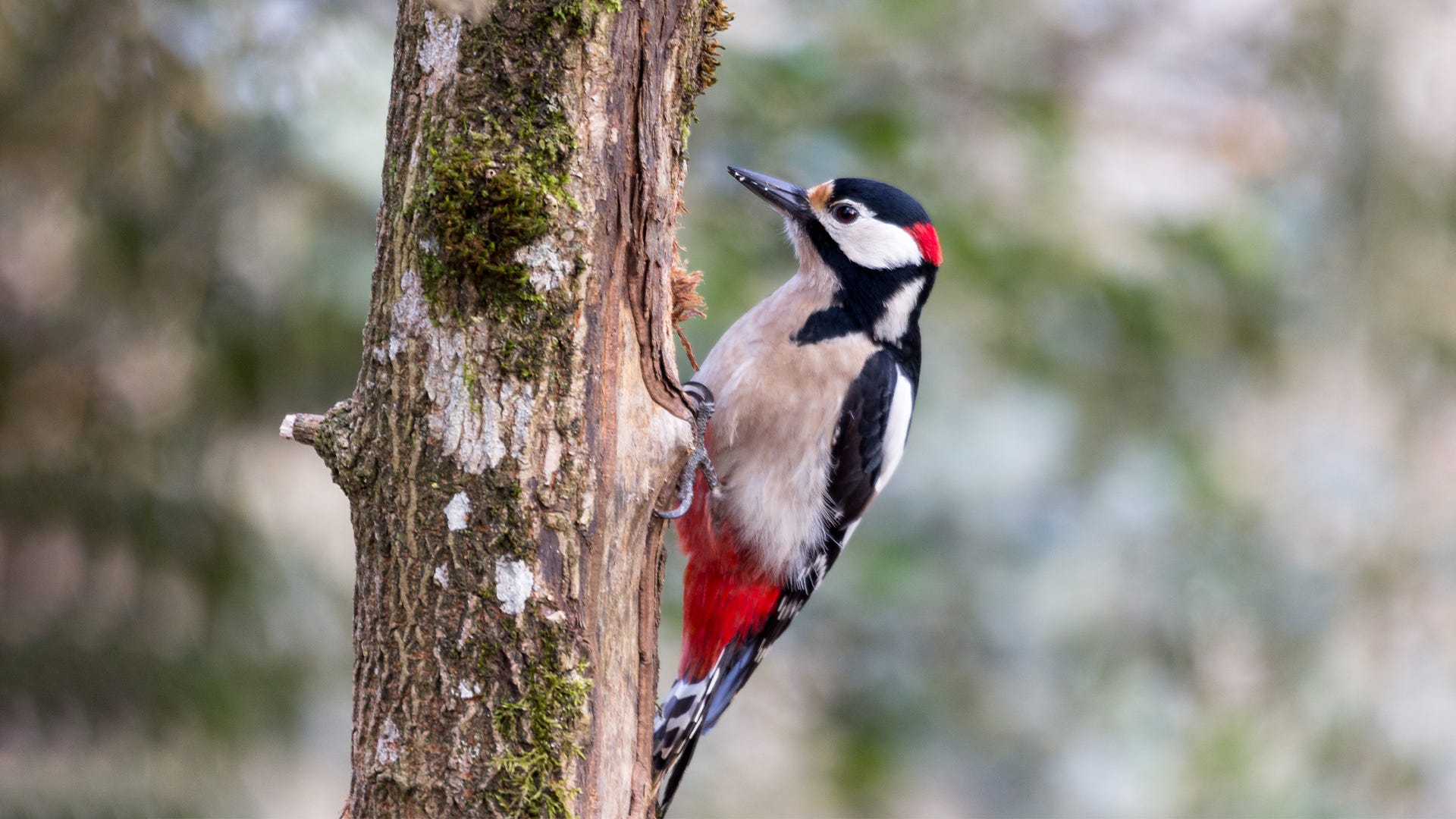Introducing the Secrets of Woodpeckers: Habits, Environment, and Extra
Woodpeckers, with their unique behaviors and specialized adjustments, have actually lengthy fascinated scientists and nature enthusiasts alike. By revealing the enigmas bordering woodpeckers' habits and habitat choices, a deeper understanding of these bird wonders arises, providing a look into their remarkable globe.
Woodpecker Habits Insights
In checking out woodpecker actions, an interesting display screen of specialized skills and adjustments emerges, losing light on their amazing eco-friendly specific niche. Woodpeckers, recognized for their distinctive drumming on trees, have a variety of behavior characteristics that add to their survival and success in their atmosphere.
In addition, woodpeckers display an one-of-a-kind feeding behavior identified by their ability to essence pests from tree bark using their specialized beaks. Their long, barbed tongues help in capturing victim, while their solid neck muscle mass offer security and accuracy during pecking movements. This feeding approach allows woodpeckers to gain access to surprise insect larvae and extract them with amazing performance.
Habitat Preferences and Option
What variables influence the environment choices and choice of woodpeckers? One vital variable affecting woodpecker habitat choice is the availability of suitable nesting sites. Woodpeckers typically favor forests with a mix of mature trees that provide enough possibilities for dental caries excavation.
Furthermore, woodpeckers show a preference for environments with a bountiful supply of food sources. They are mainly insectivorous, feeding upon beetles, ants, larvae, and other pests located in worn out wood or tree bark. Woodpeckers tend to prefer woody areas with a diverse insect populace to satisfy their dietary demands.
Furthermore, the presence of dead or rotting trees is another vital aspect in woodpecker habitat option. These trees not only give food sources however also offer suitable substratum for dental caries excavation. Dead trees are essential for the maintenance of healthy and balanced woodpecker populations, as they play a vital duty in the woodpeckers' life cycle and ecosystem characteristics.
Feeding Habits and Diet Regimen Composition
Woodpeckers show a specialized feeding behavior concentrated on foraging for insects within different habitats. Their diet plan largely consists of insects such as beetles, ants, caterpillars, and crawlers, which they locate by tapping on tree bark and paying attention for the sound of activity inside. Woodpeckers utilize their solid beaks to drill right into the timber and their long, barbed tongues to draw out target from holes. Along with insects, woodpeckers likewise eat tree sap, fruits, nuts, and seeds, adding range to their diet regimen depending on the period and schedule of food sources.
The foraging strategies of woodpeckers are well-adapted to their arboreal way of living (Woodpeckers in Florida). Their capability to dig deep into timber not just supplies them with food however likewise assists in producing nesting tooth cavities and establishing areas. Woodpeckers play a vital duty in keeping the health and wellness of forests by controlling insect populations and assisting Click Here in the disintegration of timber. Comprehending their feeding routines and diet plan composition is important for conservation initiatives targeted at protecting these distinct and important birds.
Drumming Appears and Communication
Utilizing quick drumming noises on different surfaces, woodpeckers use an unique form of interaction to indicate territory borders and draw in friends. This drumming habits is not only a method of communication yet additionally acts as a way for woodpeckers to develop their presence within a certain area. The strength, speed, and pattern of the drumming can share essential details to other woodpeckers in the location.
Woodpeckers utilize drumming sounds to reveal their visibility in a territory and to advise off prospective intruders. The loud and repeated nature of the drumming functions as a clear signal to other woodpeckers that the location is already declared. This helps in minimizing conflicts and lessening physical confrontations in between individuals.

Survival Adaptations and Specialized Composition
)
Final Thought
In conclusion, woodpeckers exhibit unique actions, such as drumming audios check that for communication, and have specialized makeup for survival in their chosen environments. Their feeding routines and diet plan composition better demonstrate their adaptability to numerous atmospheres. By understanding these facets of woodpeckers, researchers and conservationists can much better safeguard and maintain these interesting birds and their communities.
Comments on “Indigenous Woodpeckers in Florida: A Guide to Species and Behaviors”